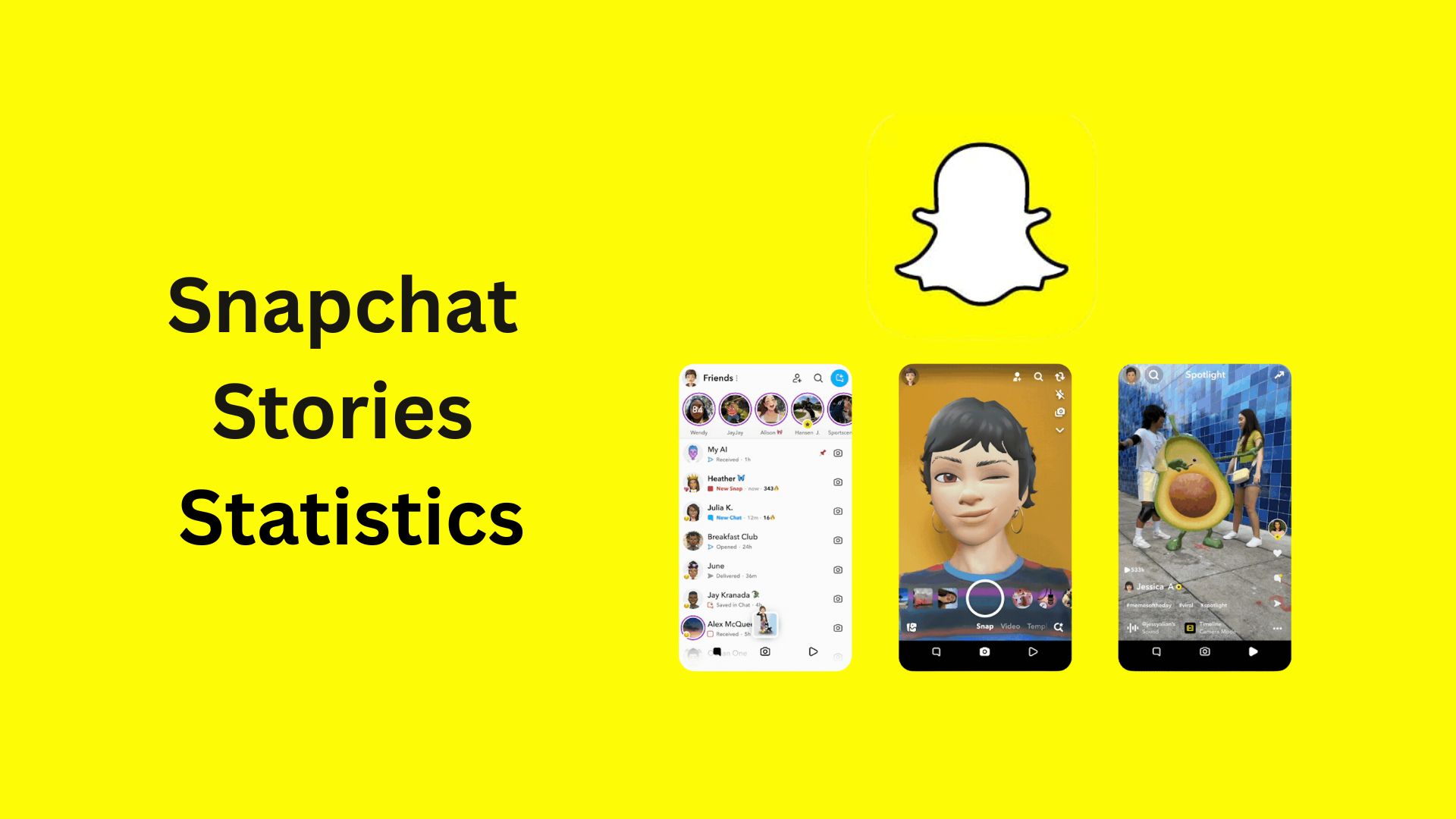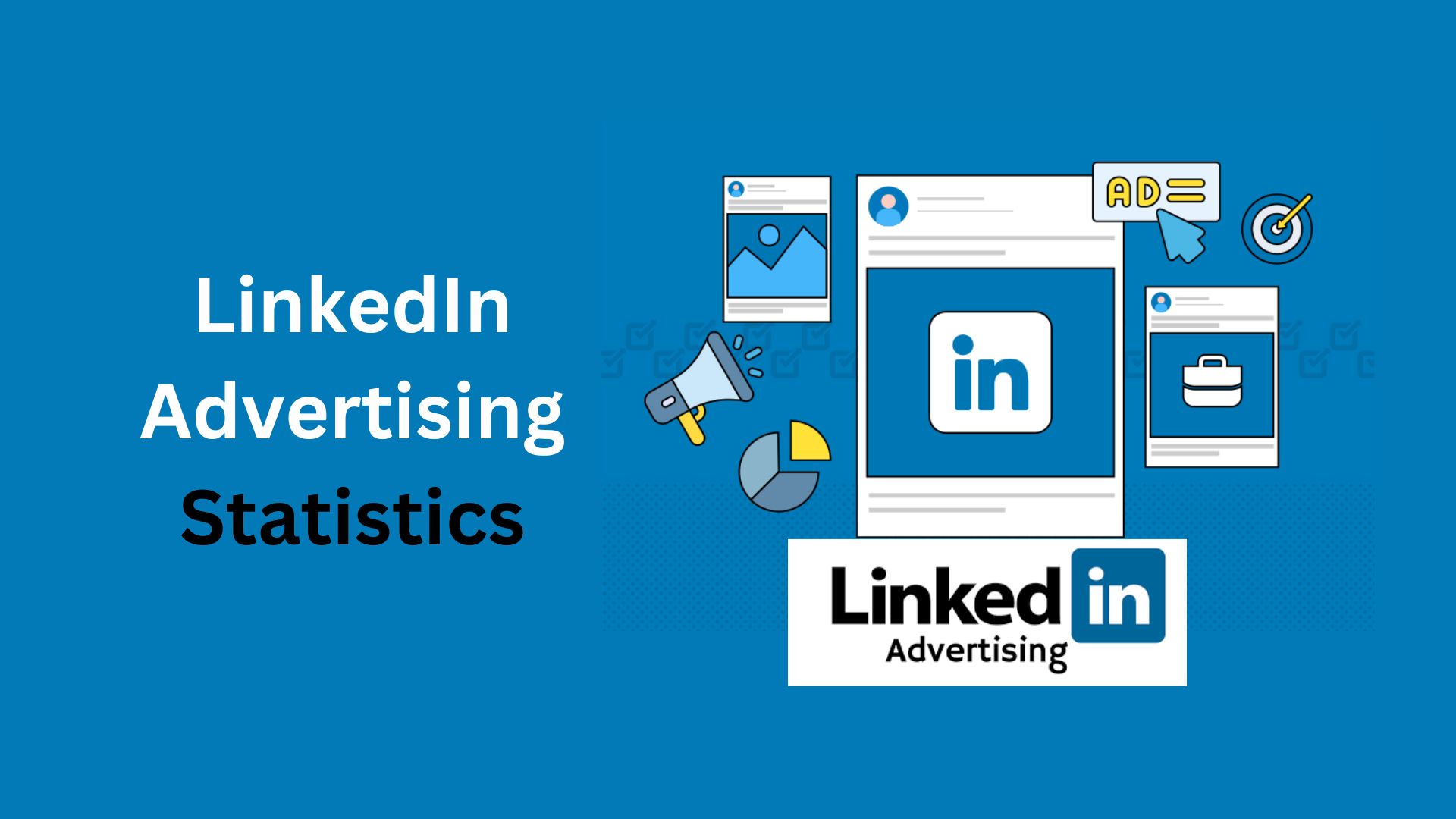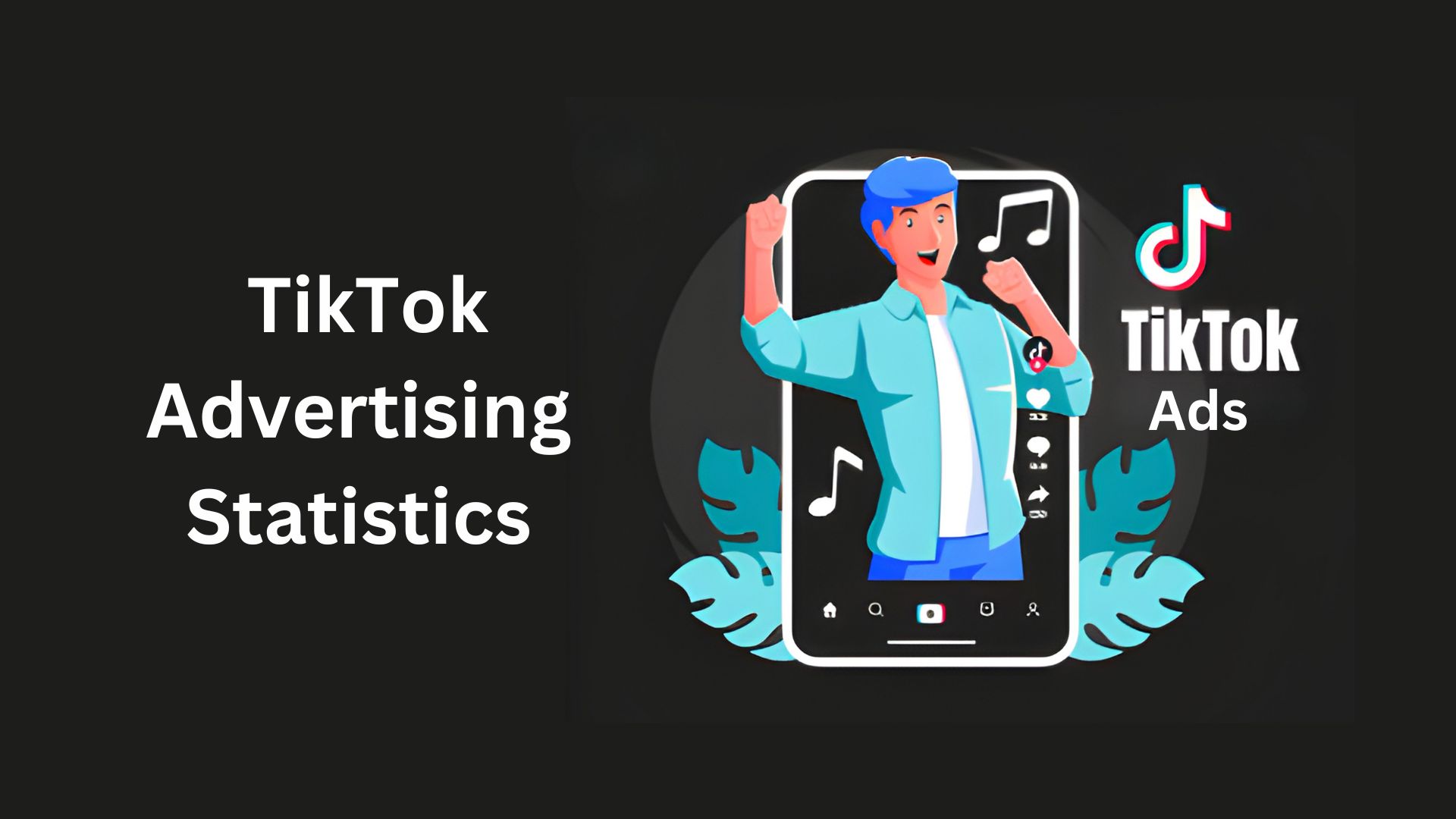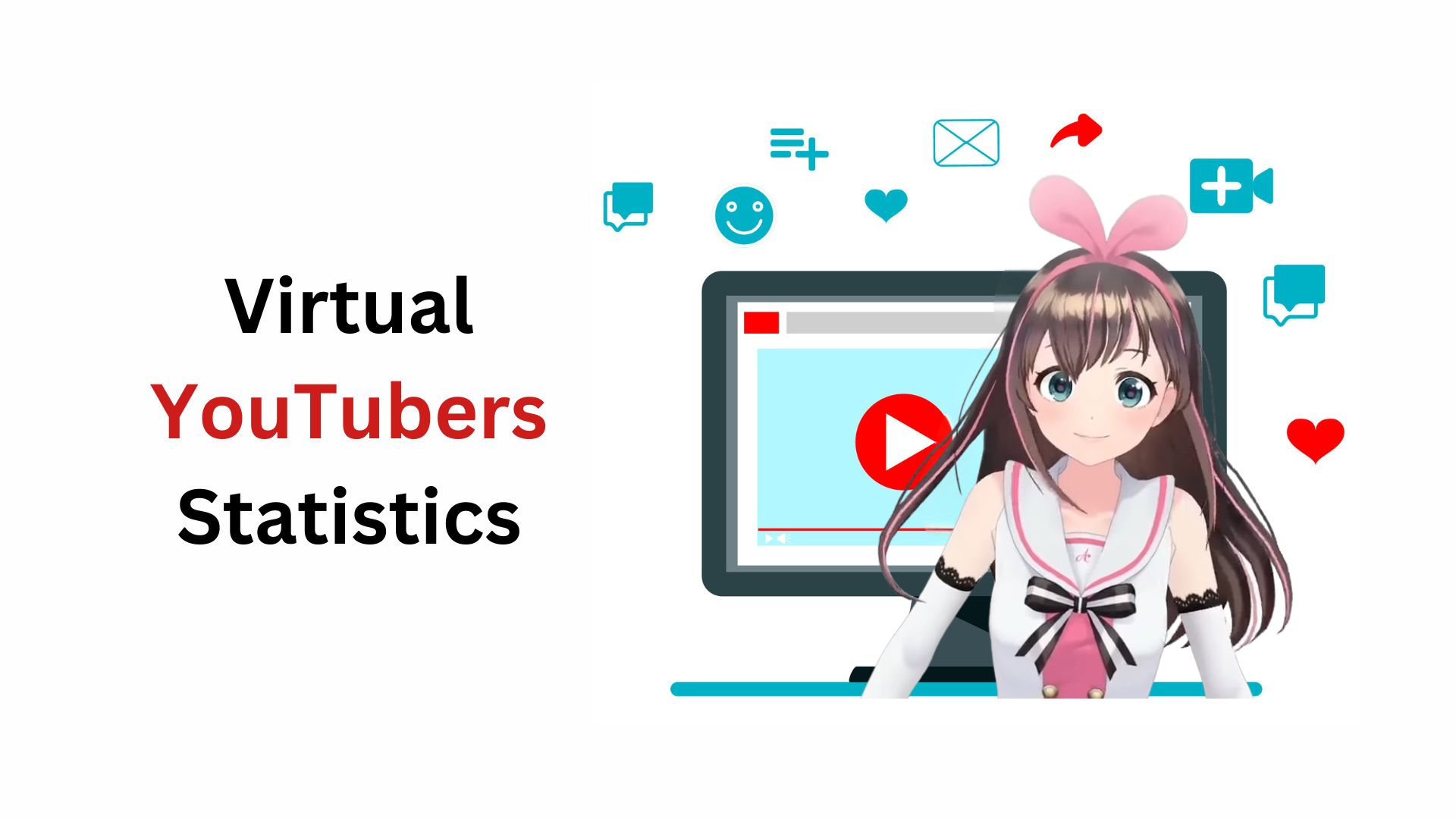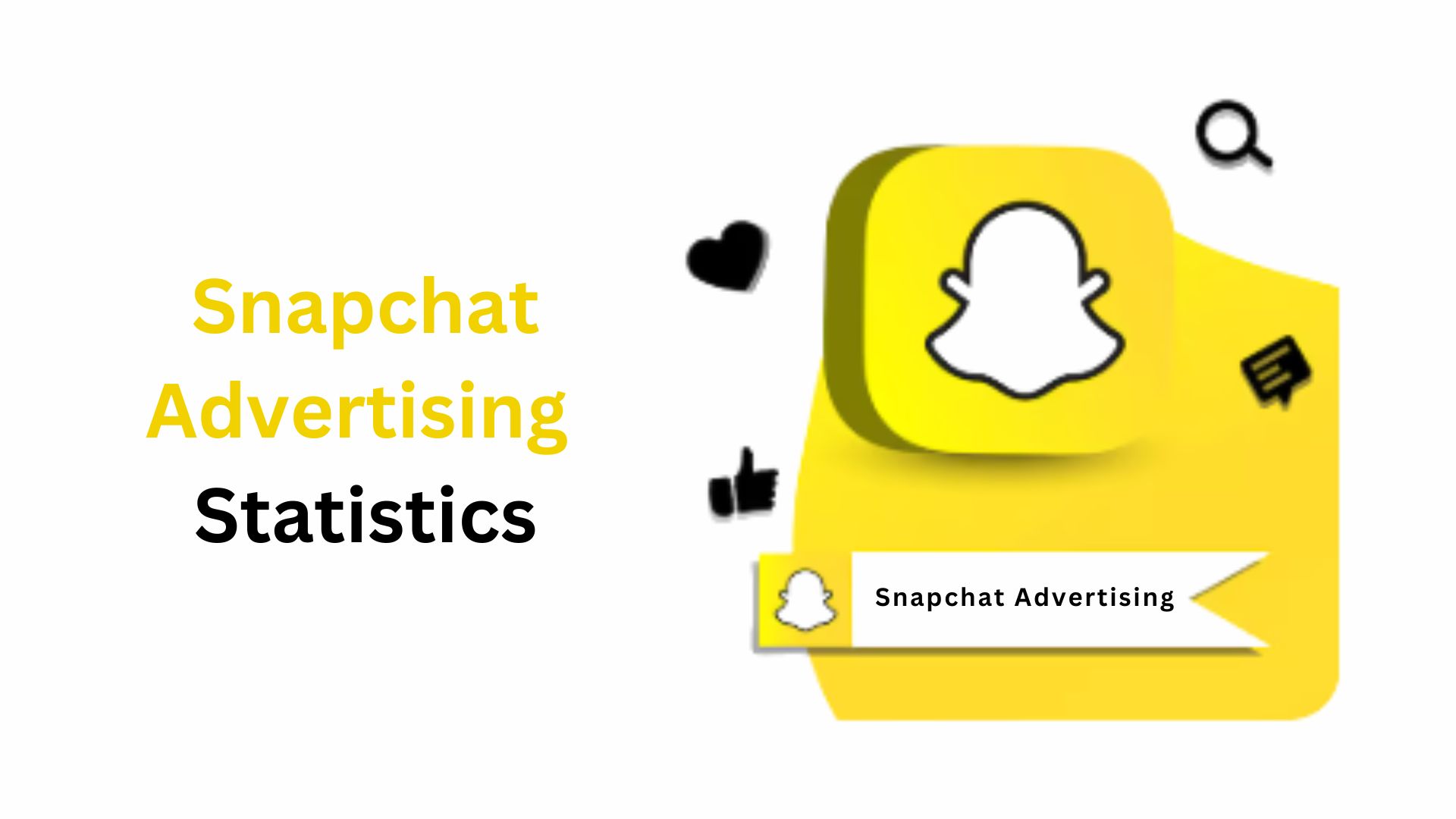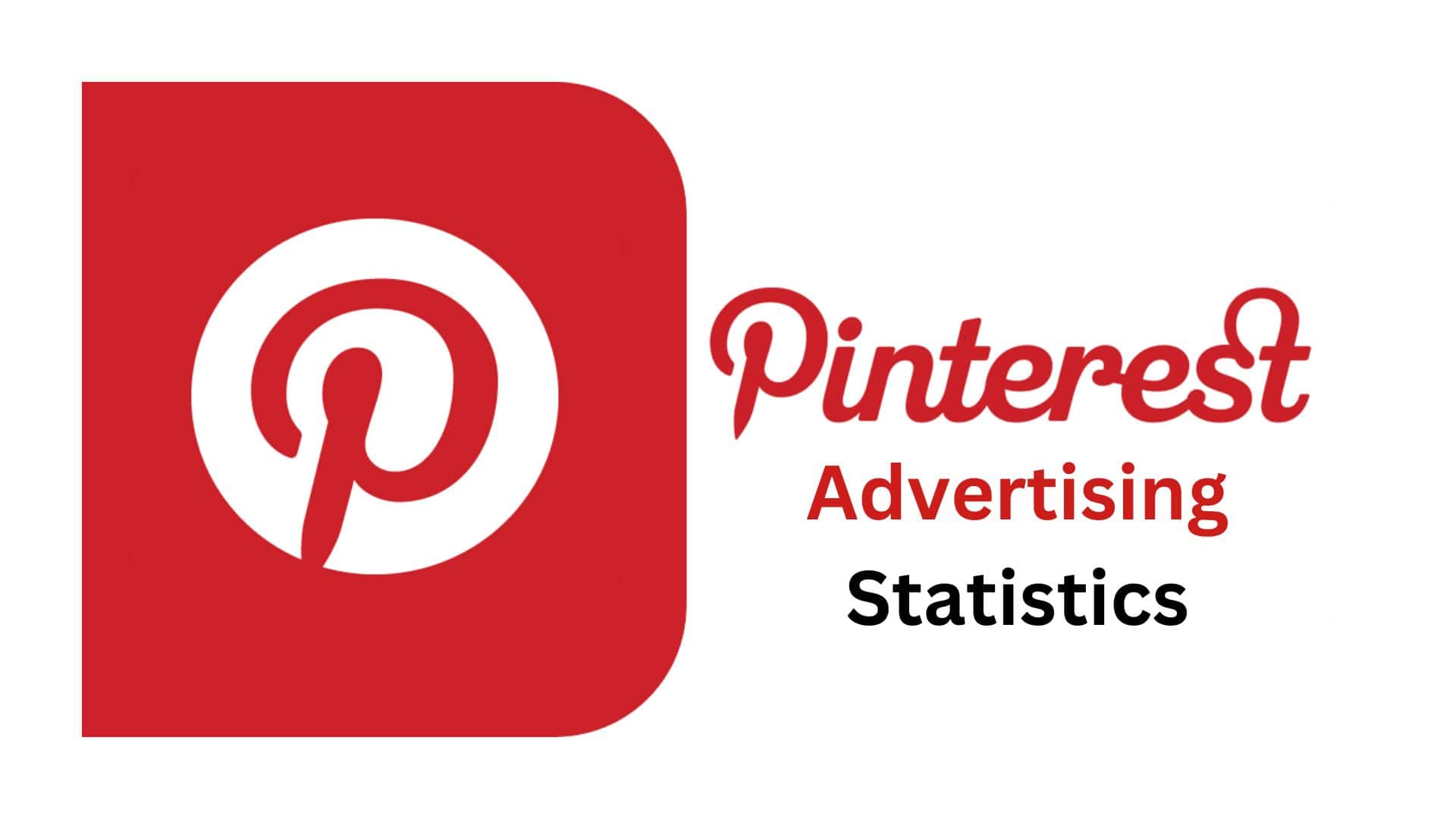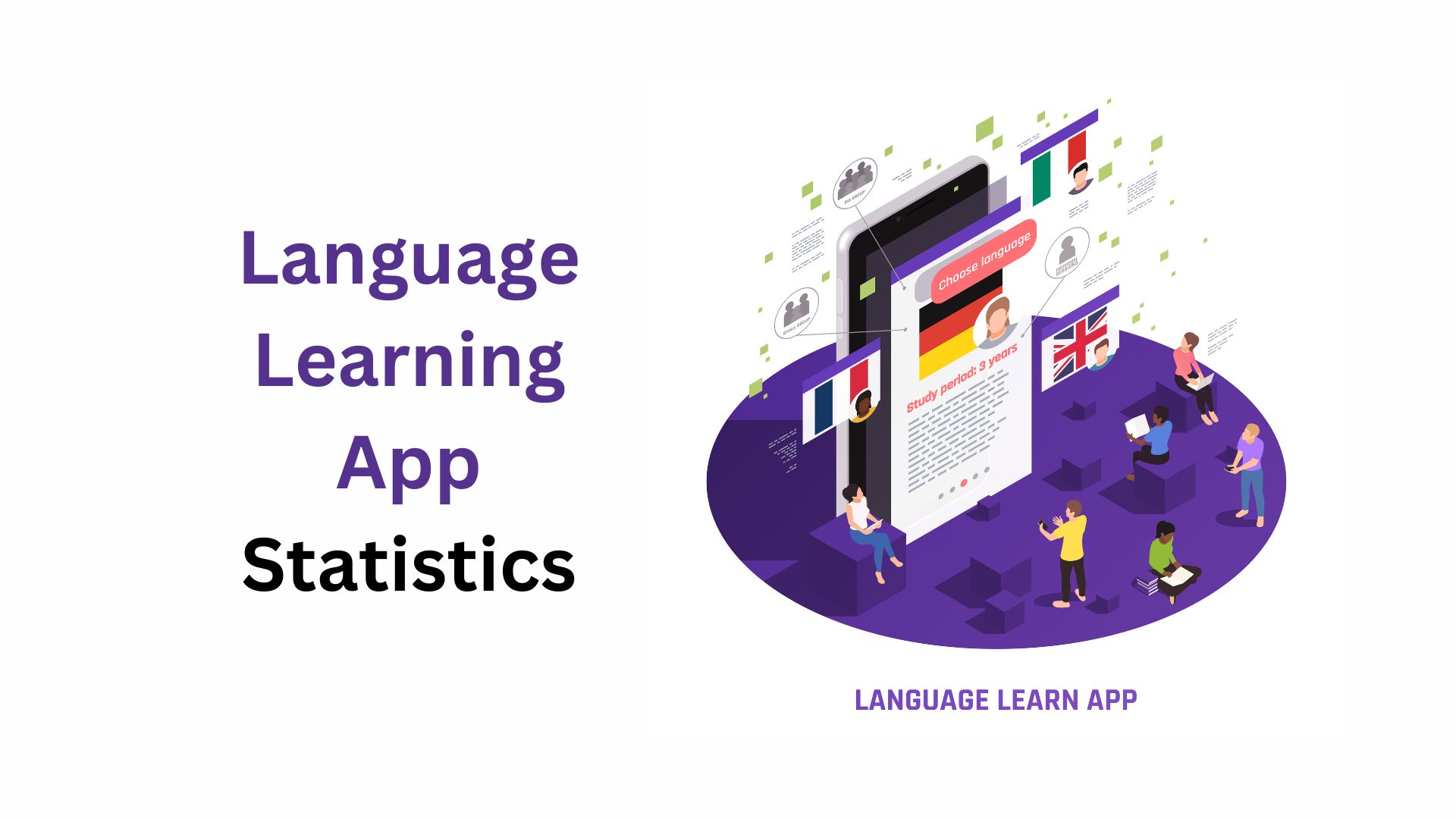Mixed Reality Statistics and Facts (2025)
Updated · Oct 23, 2025
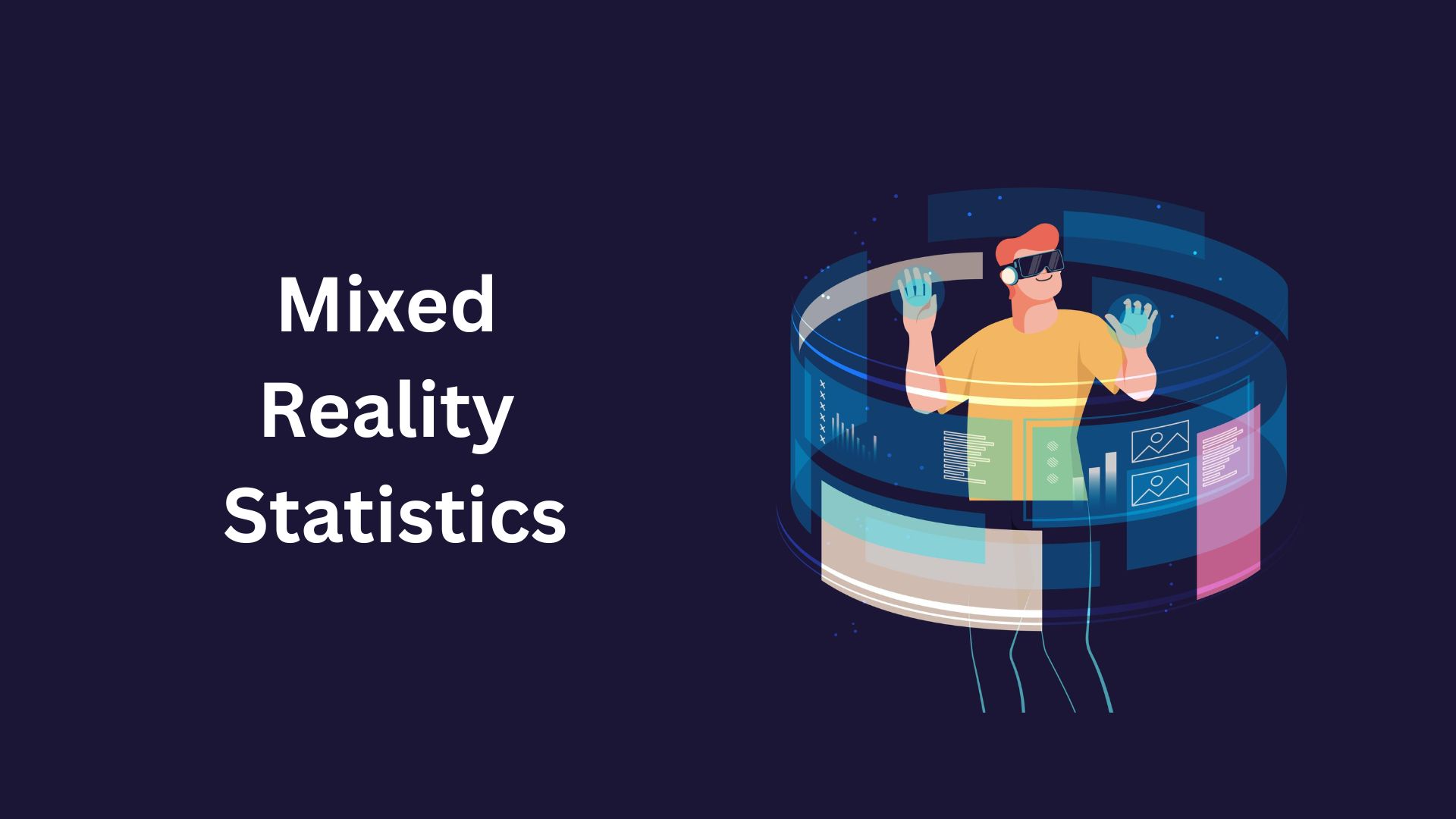
Table of Contents
- Introduction
- Editor’s Choice
- General Facts
- Mixed Reality Market Size
- Mixed Reality Figures By The User Group of the AR And VR Software Market
- Spending On AR And VR
- User Perception Toward Virtual Reality Experiences
- Interest in Virtual Reality by Use Case
- Challenges to the Adoption of AR and VR
- Mixed Reality Growth, Adoption, And Global Impact
- Recent Developments In The Mixed Reality Industry
- Conclusion
Introduction
Mixed Reality Statistics: Mixed reality (MR) is not just a concept anymore. By 2025, it’s the technology of the future in the business and consumer sectors that mixes the physical and the digital world—allowing humans to place 3D objects in a real room, share virtual workspaces, or train workers with realistic simulations.
This article provides a straightforward, number-first view into the size of the MR in 2025, the buyers, the flowing money, and the strongest trends and risks involved. We have gathered the most important in sights, with the help of Mixed Reality statistics, which show the growth trends in the market.
Editor’s Choice
- The global Mixed Reality (MR) market first went up to US$36.7 billion in 2022 to US$52.6 billion in 2023, later on, to US$112 billion in 2025, and finally to US$1.22 trillion by 2032 with a great 43.2% CAGR.
- Medical, construction, and property voluntary usages are intensifying, with the healthcare segment having a user base growth estimated from 0.8M to 3.4M by 2025.
- Consumers continue to lead the global AR/VR market spending with US$6.36 billion, followed by distribution/services (US$1.9B), manufacturing (US$1.66B), and public sector (US$1.52B).
- Using MR marketing, Fortune 500 companies obtained 94% higher conversion rates and 460% ROAS, but only 30% of Fortune 1000 firms are running MR campaign trials.
- The combined AR/VR market is expected to reach US$89.82 billion in 2025, up from US$62.75 billion in 2024, representing an annual growth of 31%.
- There are 171 million VR users worldwide, with 77 million in the U.S., and AR/VR penetration is expected to surpass 52.8% within a short period.
- TechGiant bought MixedReality Solutions for US$800M, while XR Innovations and VirtualTech have merged to strengthen MR innovation.
- MixedTech’s new headset has a sales target of 500,000 units, and RealityPlus’s MR content platform is set to attract 1 million users in six months.
- Startups got various amounts of funding—US$100M (MixedRealityTech) and US$50M (ImmersiveTech)—to support MR growth and partnerships.
- US$4 billion investment in MR R&D was made worldwide, along with a 40% increase in healthcare and a 50% increase in the manufacturing/automotive industry adoption.
General Facts
- The mixed reality (MR) market is part of the larger extended reality (XR) market, which comprises augmented reality (AR) and virtual reality (VR) as well.
- The global XR market was valued at US$41.2 billion in 2023, and the forecasts pointed to the market surpassing US$100 billion by 2026.
- Such a scenario indicates that the industry is expected to more than double its worth in just three years, which is a clear indication of strong momentum and adoption across both consumer and enterprise sectors.
- The AR/VR market at the consumer level was predicted to grow by 23.5% in 2023 alone, thereby reaching a total value of US$31.1 billion.
- The estimation for the near future is that the consumer expenditure in this segment will reach US$50 billion by 2026.
- Another reason for the rapid growth is the enterprise segment, which is becoming a more significant part of the whole.
- The companies are investing more and more in XR and MR technologies for purposes like training, simulation, product prototyping, and marketing, along with other areas of productivity and collaboration.
- In addition, hardware developments have also played a significant role. An example is Apple’s Vision Pro, which was revealed in June 2023 and costs US$3,499.
- The device represents a huge leap in technology because users can now mix AR and VR experiences without any break.
- On the same note, Meta’s Quest 3 was also revealed in June 2023, and it is the same year that users were given the option to switch between real and virtual worlds more effortlessly.
- The next-gen headsets really did a great job in attracting more people to the mixed reality sector, as they were able to offer more adaptable and immersive experiences.
- Such data from the companies involved together demonstrate a technology sector that is rapidly accelerating. The XR industry of US$41.2 billion in 2023 is expected to surpass US$100 billion by 2026.
- Besides, consumers of VR/AR will have an annual growth of over 23%, which makes the trend even stronger for the market’s assumption.
Mixed Reality Market Size
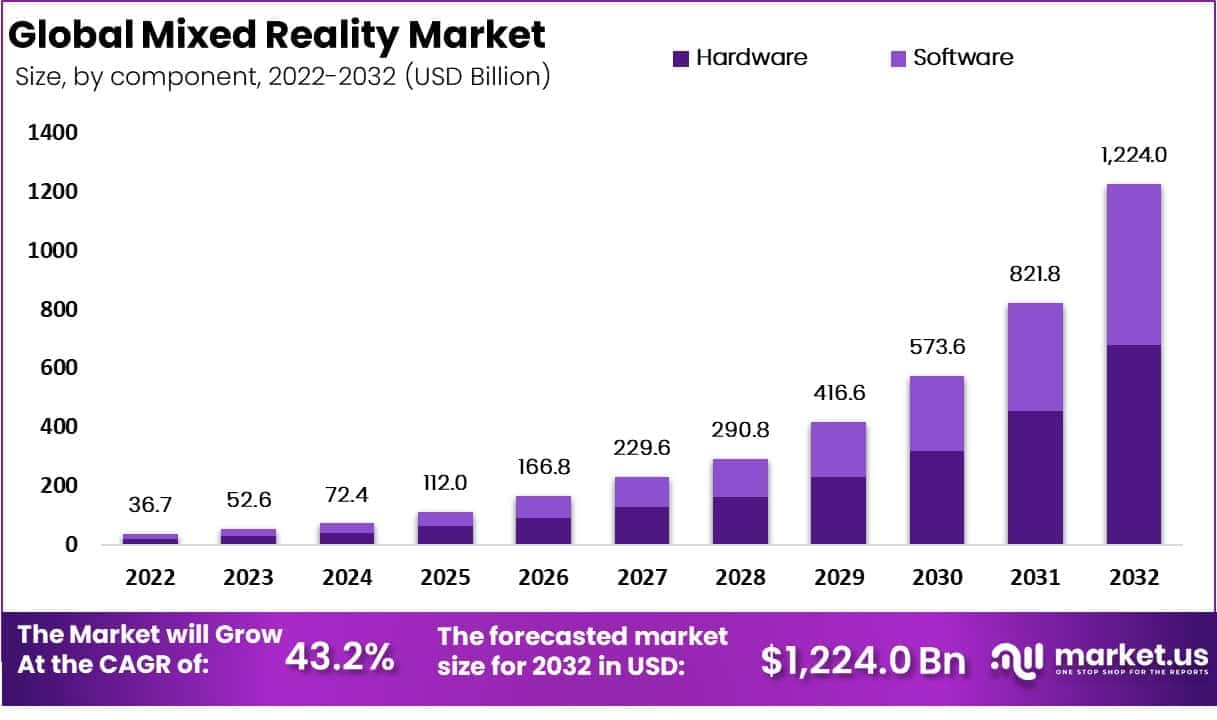
(Reference: market.us)
- As per Market.us, the global Mixed Reality (MR) market has grown tremendously over the last ten years.
- It took the immersive tech adoption that quickly the collected market sectors were in the 2022 around US$36.7 billion.
- Then just a year later, the amount increased to the highest US$52.6 billion in 2023, reflecting the growth in demand and investment was quite strong as more and more businesses started using the MR in their operations.
- The push was constant, though. 2024 was the year when the revenues were already at US$72.4 billion, which is a sign of the market slowly but surely expanding.
- Analysts even forecast an earlier, sharper increase in 2025 with the market being capped at US$112.0 billion—a crystal-clear indication that mixed reality was moving away from the experimental stage and turning into a regular tool for business and consumers.
- The following years saw an even more intense growth. The market was supposed to be worth US$166.8 billion in 2026, and then, by 2027, US$229.6 billion.
- In 2028, mixed realty got a market size of US$290.8 billion.
- Strikingly, the most remarkable increment happened in the year 2029 as sales were projected to reach US$416.6 billion.
- The increase demonstrated that companies from all parts of the world were embracing MR for training, design, collaboration, and virtual experiences en masse.
- The inclusion of augmented and virtual reality was considered integral to the digital transformation of enterprises.
- The global MR market was going to be US$573.6 billion by 2030, and this was the point in history marking the next step in the immersive computing evolution.
- Growth went on—by 2031 it was going to be US$821.8 billion, and in 20,32 the market could be such an awesome US$1.22 trillion in yearly revenue.
- All in all, this persistent upward movement could be translated into a CAGR of approximately 43.2%, which means that mixed reality is not only a very fast-changing developers’ toolkit but also a soon-to-be-massive user-friendly technology.
- MR is to be one most game-changing technologies of the next decade, worth trillions of transformed dollars in the global economy.
Mixed Reality Figures By The User Group of the AR And VR Software Market
- The user base for augmented reality (AR) and virtual reality (VR) software has grown gradually yet quickly across different sectors.
- This is a sign of the worldwide increasing adoption of mixed reality technologies.
- In the year 2020, video games controlled the market share with 70 million users, thus confirming the fact that gaming has been the main reason for immersive technology adoption.
- This leading position is likely to be maintained very strongly, as the number of game users is expected to go up three times, to 215 million by the year 2025.
- The live events sector came next with 28 million users in 2020, and its number is also predicted to grow rapidly by 2025 to 95 million.
- The reason for this rise is the more and more AR and VR technologies in concerts, sports, and other entertainment experiences, which allow audiences to participate virtually, so that it was never possible before.
- Video entertainment was a strong user category of 24 million in 2020, which I expected to be computed in 2025 around 79 million due to the efforts of more streaming platforms and production studios investing in immersive storytelling formats.
- In the retail sector, AR and VR technologies are making it possible to transform shopping experiences—virtual try-ons, digital showrooms, and 3D product previews have already become part of the retail ecosystem.
- The user base in retail is projected to grow from 9.5 million in the year 2020 to 31.5 million in the year 2025.
- The education sector will also see a similar increase as the users of AR/VR in education, which support virtual classrooms and interactive learning, will grow from 7 million to 15 million during the same time.
- In the case of healthcare, 0.8 million users are expected in 2020, and 3.4 million users by 2025, which shows that AR/VR is being applied in medical training and patient care simulations.
- Engineering is expected to see an increase in user base from 1 million to 3.2 million, driven by the applications of design visualisation and remote collaboration.
- Real estate, though smaller in size, will gain a slight increase in users from 0.2 million to 0.3 million by 2025, owing to the rising popularity of virtual property tours.
- The projection indicates a rise in the number of gamers from 70 million in 2020 to more than 215 million in 2025 and from insignificant numbers in healthcare and education to a point where these technologies are recognised as mainstream.
- Hence, the projection is that virtual reality technologies are here to stay, not only as tools for work but also for learning and fun.
Spending On AR And VR
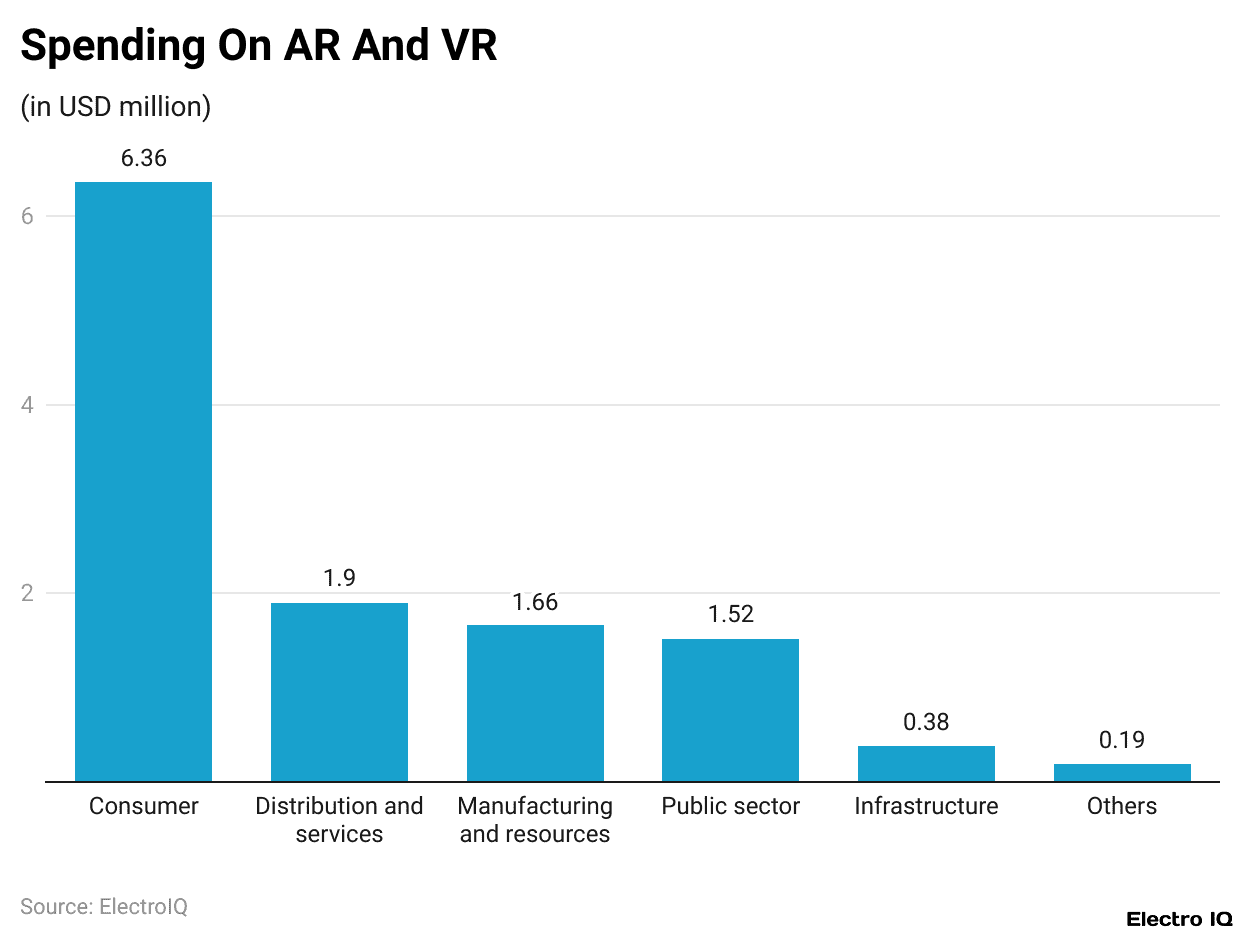
(Reference: scoop.market.us)
- The consumer sector at present is dominating the spending on AR and VR technology, reflecting the public’s high interest in the applications of AR and VR in entertainment, gaming, and online shopping, where immersive technology makes the experience thrilling and personalised.
- The consumer segment’s expenditure amounts to US$6.36 billion.
- Meanwhile, the distribution and services sector is not that far behind, with an investment of about US$1.9 billion in AR and VR technologies.
- This indicates the extent to which AR and VR are assimilated into organizations’ practices already, as they are the main drivers for the enhancement of customer service, logistics, and retail operations — just think of the virtual try-on, for example, and the warehouse training and supply chain visualization that are made possible through AR and VR.
- The manufacturing and resources sector has also considerably advanced, allocating US$1.66 billion for AR and VR technologies.
- By deploying immersive tools, the sector cannot only streamline but also boost its training and operational efficiency.
- Workers, for example, can quickly grasp the most difficult procedures if they get to practice them in the virtual world, while engineers can view their prototypes in three dimensions before real-world adjustments are made.
- The public sector is yet another major investor, with a total of US$1.52 billion allocated for various applications like education, healthcare, and training, wherein already mentioned technologies are being implemented by the governments and public institutions for the betterment of society.
- On the other hand, the power and communication sectors are estimated to invest only US$0.38 billion in total, which indicates that the interest in the use of AR and VR in construction, utilities, and urban planning is just starting to grow.
User Perception Toward Virtual Reality Experiences
- According to recent findings, the most appealing aspect of virtual reality for users is the feeling of entering a different world. About 47% of users identified this immersive experience as the most exciting part of VR.
- Around 36% of people admired the advanced technology behind VR, appreciating how it makes such lifelike experiences possible.
- Nearly 31% were drawn by the thrill of trying something completely new, seeing VR as a fresh and unfamiliar adventure.
- For 26% of users, VR’s power to create an intense and engaging gaming experience was highly valued.
- Approximately 21% were fascinated by the chance to feel like they were “part of a movie,” showing VR’s ability to reshape traditional entertainment by placing the viewer inside the story.
- Nearly 16% highlighted VR’s potential to open new ways of communication, recognizing its ability to bring innovation to human interaction.
- An equal 16% of respondents remained uncertain, either showing interest in multiple aspects or a limited understanding of the technology.
- Overall, these results show that VR appeals to users in many ways, combining immersion, novelty, and technological wonder into a single transformative experience.
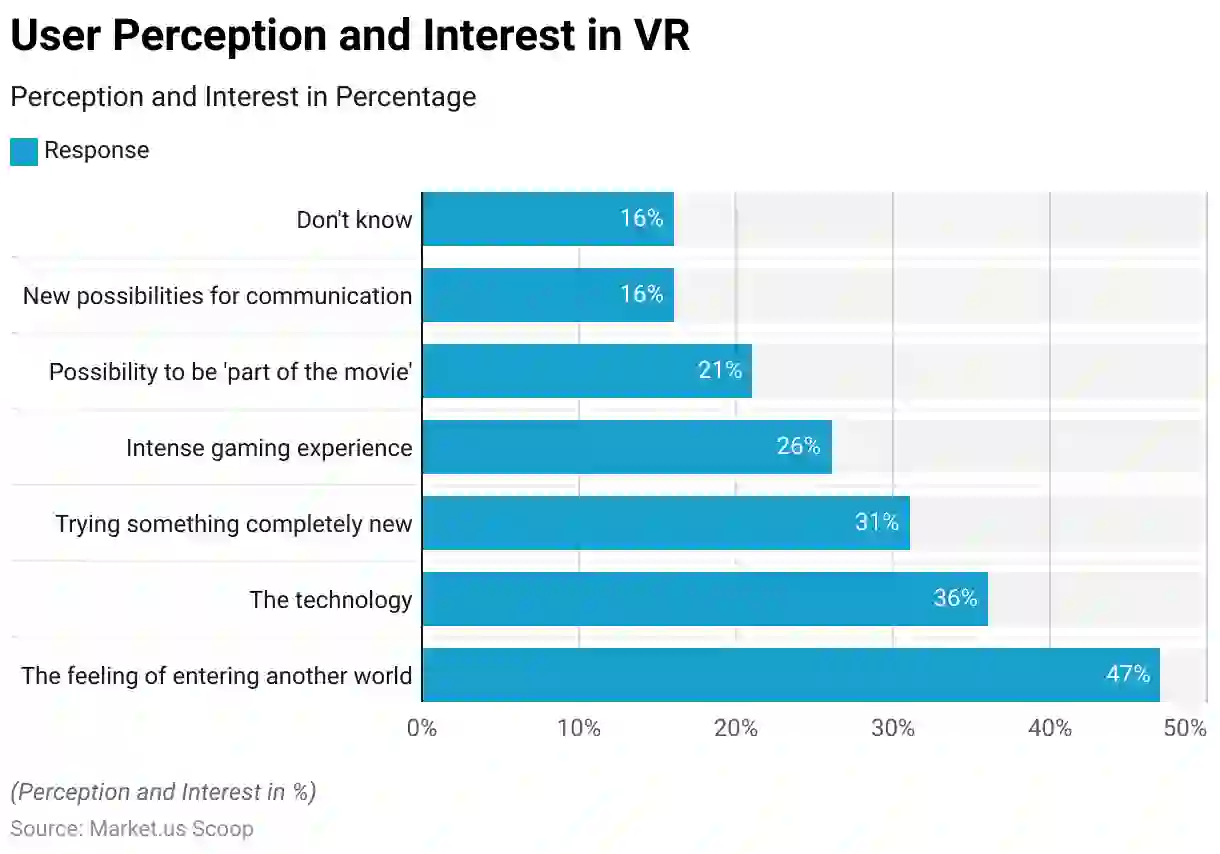
Interest in Virtual Reality by Use Case
- Gaming attracted the highest level of interest, with 37% of people showing enthusiasm for VR in gaming activities.
- Travel came next, with 12% expressing curiosity about using VR to explore destinations virtually.
- Music, watching movies or TV shows, and immersive environments each received 9% interest, showing a strong inclination toward entertainment experiences.
- Training and education, along with imaginary environments, both recorded 8% interest, reflecting VR’s usefulness for learning and creative engagement.
- History captured 7% of respondents’ attention, highlighting interest in reliving or studying past events through immersive simulations.
- Only 1% of respondents mentioned making content better as their main purpose for VR, indicating it is not yet a major motivation among users.
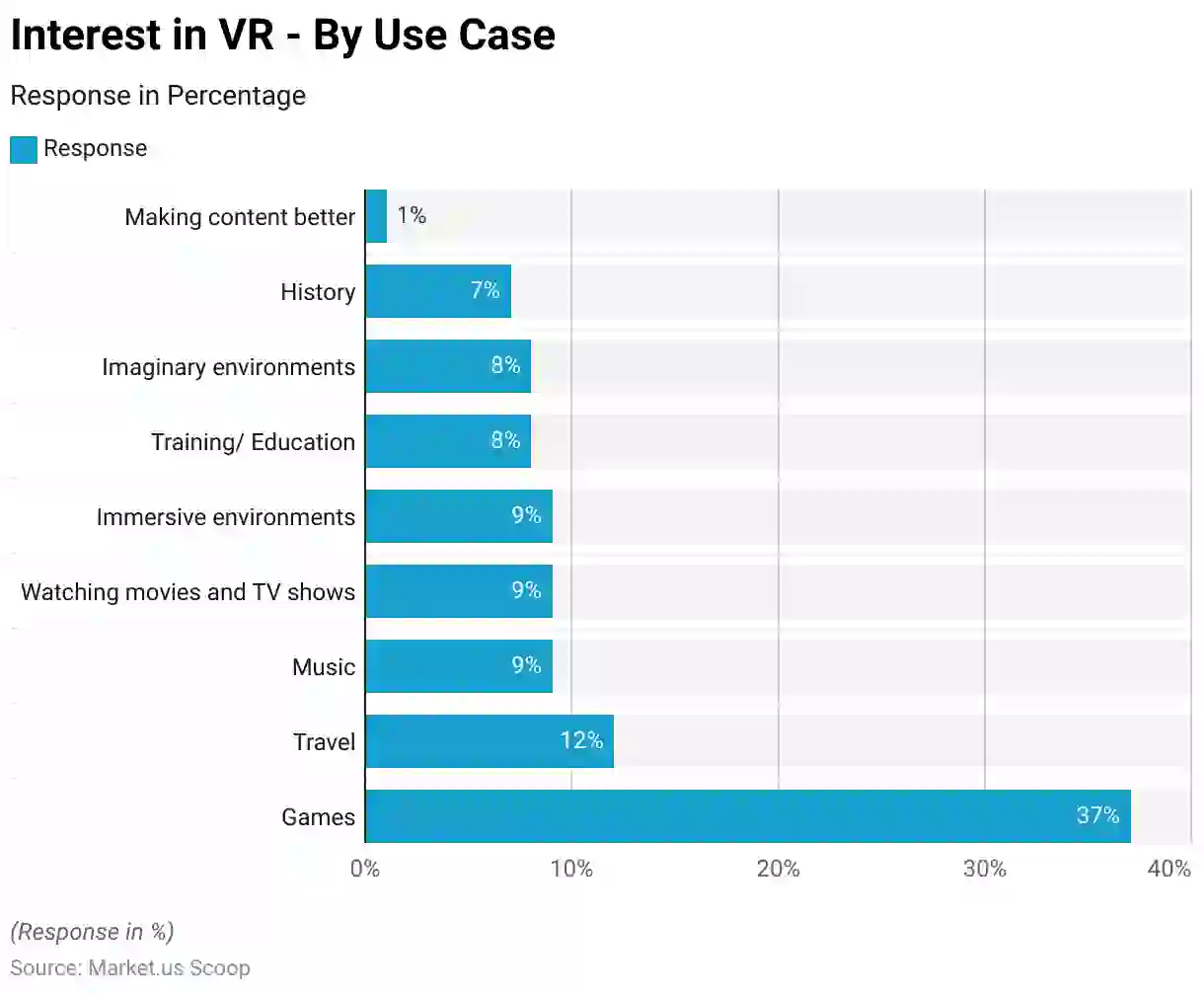
Challenges to the Adoption of AR and VR
- User experience remains a major concern. Around 32% of AR users and 19% of VR users report problems such as heavy devices and frequent technical issues, showing that AR is more affected by usability barriers.
- Content availability is another major limitation. VR users face higher content challenges at 27%, compared to 18% for AR, reflecting the need for better and more diverse immersive experiences in VR.
- Consumer and business hesitation also influences adoption. Roughly 15% of respondents for AR and 19% for VR show reluctance, signaling general caution in embracing these emerging technologies.
- Regulation and legal risks are reported by 14% of AR users and 12% of VR users. This highlights that AR encounters slightly more complications due to its integration with real-world environments.
- Financial and investment barriers continue to exist. AR faces 11% concern over funding and investment confidence, while VR records 9%, suggesting investors show slightly higher confidence in VR.
- The cost to end users remains a more visible issue in VR. Around 11% of users cite pricing as a barrier compared to 7% in AR, revealing that VR hardware and content are perceived as expensive.
- Government oversight is considered minimal, influencing only 4% of AR users and 3% of VR users, showing that regulatory restrictions are not a major challenge for either technology.
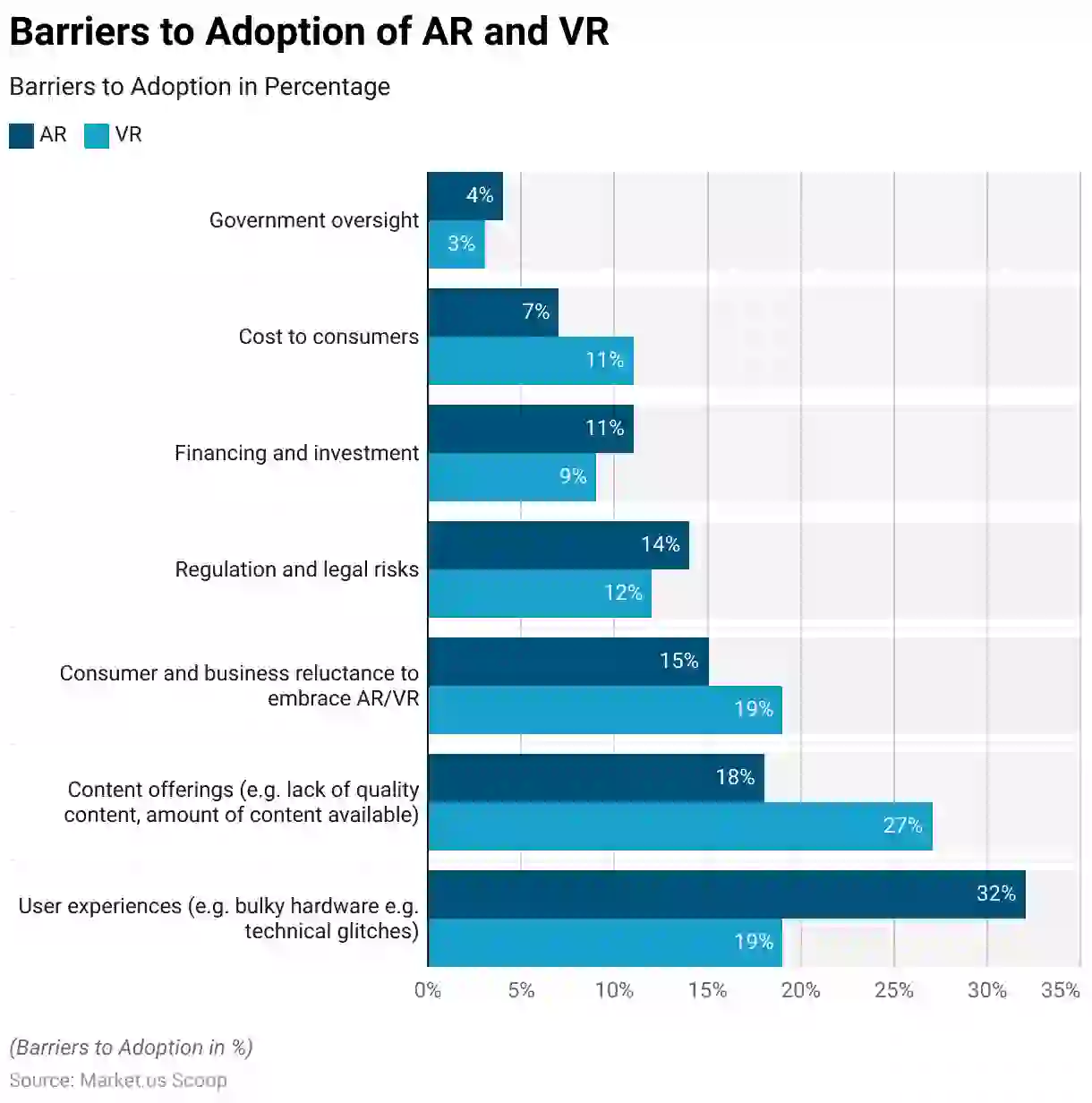
Mixed Reality Growth, Adoption, And Global Impact
- Mixed Reality (MR) is the new phenomenon in marketing, technology, and consumer engagement that is facilitating and being driven by impressive statistical growth and adoption figures.
- Up-to-date reports indicate that Fortune 500 companies using MR campaigns have had conversion rates 94% higher and an unbelievable 460% return on ad spend (ROAS) compared to traditional marketing.
- Notwithstanding such success, it is estimated that only about 30% of Fortune 1000 companies are running MR marketing trials, which points to a huge possibility for expansion as the scenario of awareness and accessibility improves.
- The MR industry was valued at US$5.03 billion in 2023 and is expected to grow to US$40.58 billion by 2030, thus witnessing a nearly 35% compound annual growth rate (CAGR).
- According to other forecasts, the market size will be only US$2.16 billion in 202,4, but it will be able to reach as far as US$27.53 billion by 2033, making a CAGR of approximately 31%.
- Global user statistics also point to the rapid rise of MR. VR users around the globe are more than 171 million today, 77 million of them being in the U.S.
- AR/VR penetration is projected to hit 52.8%, which means that more than half of the potential consumers will be using immersive tools actively.
- In the area of promotions, businesses that have employed AR technology have seen their conversion rates soar by 40%, thus signalling the empowering effect of interactive tech on buyers’ trust and decision-making.
- On the other hand, hardware, Meta’s “Tiramisu” MR prototype has three times better contrast, 90 pas on resolution, and 1,400 nits as max brightness, which indicates the great technological progress.
Recent Developments In The Mixed Reality Industry
- The mixed reality industry is growing very fast, and it is due to major mergers and acquisitions, new product releases, and increased investment.
- The tech giant has strengthened its hold by taking over Mixed Reality Solutions for US$800 million.
- On the other hand, XR Innovations and VirtualTech decided to join forces to share knowledge and to speed up the process of getting new mixed reality hardware and software.
- There are also new products that are ready to enter the market. MixedTech has presented a new mixed-reality headset with next-generation production, which includes the quality of display and spatial mapping.
- The target is to sell 500,000 pieces in the first year. At the same time, RealityPlus has released a platform for developers and creators of content, setting the goal of attracting 1 million users in six months.
- Funding activity has been remarkably robust, as MixedRealityTech obtained US$100 million from Venture Capital firm XYZ in Series A, and ImmersiveTech got US$50 million from Group ABC to increase their operations and partnerships.
- Moreover, the governments have come up with regulations concerning safety and privacy in the immersive technology sector.
- A total of US$4 billion has been spent globally on the development and enhancement of mixed reality innovations to give more market opportunities.
Conclusion
Mixed Reality Statistics: The mixed reality (MR) trend is quickly maturing from a technological niche with very few users to a universal business and consumer tool. The worldwide market is expected to go up to US$1.22 trillion in the year 2032, with a CAGR of 43.2% and adoption continuing in the areas of gaming, healthcare, education, manufacturing, and retail.
The combined investments of both the consumer and the enterprise in AR/VR technologies, alongside the introduction of major hardware such as Apple’s Vision Pro and Meta’s Quest 3, are the driving forces behind this growth. Furthermore, MR marketing is not only boosting but also providing a clear picture of the ROI. MR is becoming a force to change the face of industries and everyday life around the world.
FAQ.
The global MR market has grown from US$36.7 billion in 2022 to US$52.6 billion in 2023. It is expected to reach US$112 billion by 2025 and could even hit US$1.22 trillion by 2032, with a CAGR of 43.2%.
Healthcare, manufacturing, education, engineering, retail, and real estate are the sectors with the highest adoption rates. For example, the number of healthcare users is expected to increase from 0.8M to 3.4M by 2025, while manufacturing/automotive adoption is already up by 50%.
MR agencies of Fortune 500 are reaping the benefits of 94% more conversions and 460% returns on ad spend, thus, it is proved the power of immersive experience in the engagement of the consumer and sales process.
The thrilling world of gaming, interesting virtual experiences, and the wow factor of immersive shopping are some reasons for the rise in consumer interest, along with the latest high-tech devices such as Meta Quest 3 and Apple Vision Pro. This is why projection of US$89.82 billion AR/VR market by the end of 2025 is such a high figure.
The likes of TechGiant are coming into the mixed-reality sector at a fast pace with acquisitions such as the one mentioned above (US$800 million for MixedReality Solutions). Then there are also phenomenal advancements in technology with new product launches, startup funding (US$100 million for MixedRealityTech, US$50 million for ImmersiveTech), and US$4 billion in global R&D.

I hold an MBA in Finance and Marketing, bringing a unique blend of business acumen and creative communication skills. With experience as a content in crafting statistical and research-backed content across multiple domains, including education, technology, product reviews, and company website analytics, I specialize in producing engaging, informative, and SEO-optimized content tailored to diverse audiences. My work bridges technical accuracy with compelling storytelling, helping brands educate, inform, and connect with their target markets.

